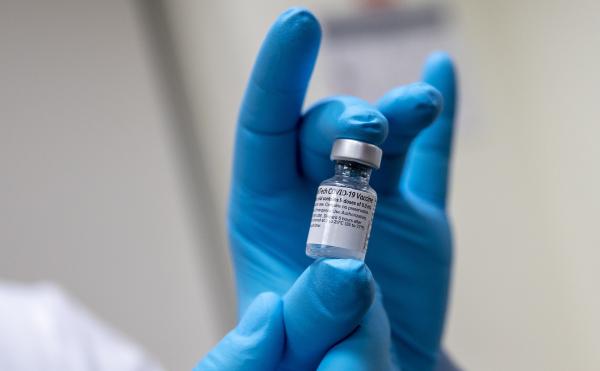COVID-19 vaccination has been linked to a collection of severe side effects. Many cases of anaphylaxis, myocarditis, Guillain-Barre syndrome, blood-clotting disorders and even Bell's palsy have been reported to the federal Vaccine Adverse Event Reporting System (VAERS) since the first shot was approved last December. Predictably, these self-reported incidents have provided ample fodder to activist groups and skeptics working to scare people away from effective and very safe immunizations for COVID-19.
The skeptical take now seems to be that mass vaccination is injuring and killing untold numbers of people as well as driving the evolution of SARS-COV-2 variants, necessitating dangerous booster shots. That last argument has been addressed elsewhere, so we'll continue our analysis of adverse events from part one.
As I noted in the first installment, studies of adverse events lag behind the reported adverse events. The skeptics will continue to cite unverified VAERS data, then quietly discard them once they're investigated and found to be less damning than originally thought.
Where we started
First, what do we know from the clinical trials performed before the vaccines were authorized? The FDA evaluated all the safety data reported in the trials, but in March, a team of researchers collected all the adverse events reported during these studies into a handy summary. Here's what they found :
In this review, we found the adverse reactions reported in the 11 trials were mild to moderate with few severe reactions which were unrelated to the test vaccine. Common adverse events were pain at the site of injection, fever, myalgia, fatigue, and headache.
Serious adverse events were reported in four trials: COVID-19 Vaccine AstraZeneca (AZD1222)—168 SAE with only three related to the vaccine; Ad26.COV2.S- four with none related to the testing vaccine; five with Comirnaty (BNT162b1) and one with Covaxin (BBV152) vaccine. [Emphasis mine]
The above review confirms that we started with thoroughly studied vaccines in December 2020. With the FDA just granting full approval to Pfizer-BioNTech's shot, we have even more safety data. But reports of adverse events inevitably proliferate as vaccine uptake increases. What do we know about these real-world cases?
700,000 doses in Mexico
Investigating reports to Mexico's Epidemiological Surveillance System, roughly the equivalent of America's VAERS database, a team of researchers examined 704,003 first-dose recipients of the Pfizer-BioNTech vaccine. The study is helpful because it surveyed a large population that was underrepresented in clinical trials conducted in other countries. Published just this month in Clinical Immunology, the investigation found that
6,536 [adverse events following immunization] AEFI were reported, of whom 65.1% had at least one neurologic AEFI (non-serious 99.6%). Thirty-three serious events were reported; 17 (51.5%) were neurologic (observed frequency, 2.4/100,000 doses). [Emphasis mine]
Headache was the most common non-serious side effect and seizure the most frequent out of 33 severe reactions, though the researchers suggested that these were probably unrelated to vaccination. “While vaccines may increase the frequency of febrile seizures in children,” they wrote, “in most cases, the coexistence of structural or genetic causes explains epileptic seizure.” Eight of the patients who experienced seizures had preexisting epilepsy or had missed doses of their medication.
5,825 (99.6%) of those who experienced any AEFI had a positive history of allergy. 17 patients required hospitalization; fortunately, 16 had been discharged by the end of the study and none had died.
Conclusion:
Our data suggest that the BNT162b2 mRNA COVID-19 vaccine is safe; its individual and societal benefits outweigh the low percentage of serious neurologic AEFI.
Similar results globally
That's a single epidemiological study involving one vaccine, though its results match those of clinical trials for all the COVID-19 shots. A systematic review and meta-analysis published in early July offered a helpful summary of what we know thus far. The researchers pooled 73,633 individuals from 14 randomized controlled trials and compared the risk of adverse events following immunization (AEFI) with 10 different shots. Results:
Severe adverse events (SAEs) were rare, and only were reported in some volunteers as hypersensitivity, facioplegia, urticaria and anaphylactic shock. Vaccine-associated anaphylaxis was rare, approximately one case per million injections, for most known vaccines. Vaccine-associated anaphylaxis was rare, approximately one case per million injections, for most known vaccines.
Risks vs benefits
Earlier this month, the CDC's Advisory Committee on Immunization Practices (ACIP) published a report estimating the efficacy of the three US-authorized vaccines compared to the most commonly reported adverse events following immunization, Guillain-Barré syndrome, thrombosis with thrombocytopenia syndrome, and myocarditis. The results are presented in the table below. Spoiler alert: the negative outcomes prevented by vaccination dwarf the side effects associated with the COVID shots.
Estimated COVID-19 outcomes prevented during 120 days after 1-dose Janssen (Johnson & Johnson) COVID-19 vaccination and 2-dose mRNA (Pfizer-BioNTech or Moderna) COVID-19 vaccination, number of Guillain-Barré syndrome and thrombosis with thrombocytopenia syndrome cases expected per million Janssen vaccine doses administered, and number of myocarditis cases expected per million second mRNA vaccine doses administered, by sex and age group — United States, 2021
The agency therefore concluded:
The estimated benefits (prevention of COVID-19 disease and associated hospitalizations, ICU admissions, and deaths) outweighed the risks (expected cases of GBS, TTS, and myocarditis after vaccination) in all persons aged ≥18 years included in this analysis.
I've been very critical of the CDC's erratic behavior during the pandemic. But for all its hyperventilating over breakthrough infections and confusing masking guidelines, the agency has done a reasonable job of monitoring vaccine adverse events and contextualizing all the scary statistics anti-vaccine groups like Children's Health Defense have reported with glee since December. The CDC's analysis also seems to comport with The European Medicines Agency's evaluation of "very rare" cases of myocarditis and pericarditis in Moderna vaccine recipients.
Conclusion
Alcohol-related causes kill an estimated 95,000 people every year. More than 38,000 people died in auto accidents in 2020. Firearm-related incidents were responsible for more than 39,000 fatalities in 2019. You may complain that I'm just counting the number of reported incidents and ignoring important details in one or more of these examples. That's absolutely correct, and it underscores my point about vaccine safety. Adding up adverse events and lighting our hair on fire is no way to assess the situation.
The rare adverse events linked to COVID-19 vaccination, taken in context, confirm that the shots don't pose a serious risk to the vast majority of people. Just as most of us can enjoy a few drinks with friends without fearing liver disease, so too can we get a vaccine without fretting about a vanishingly rare adverse reaction.




